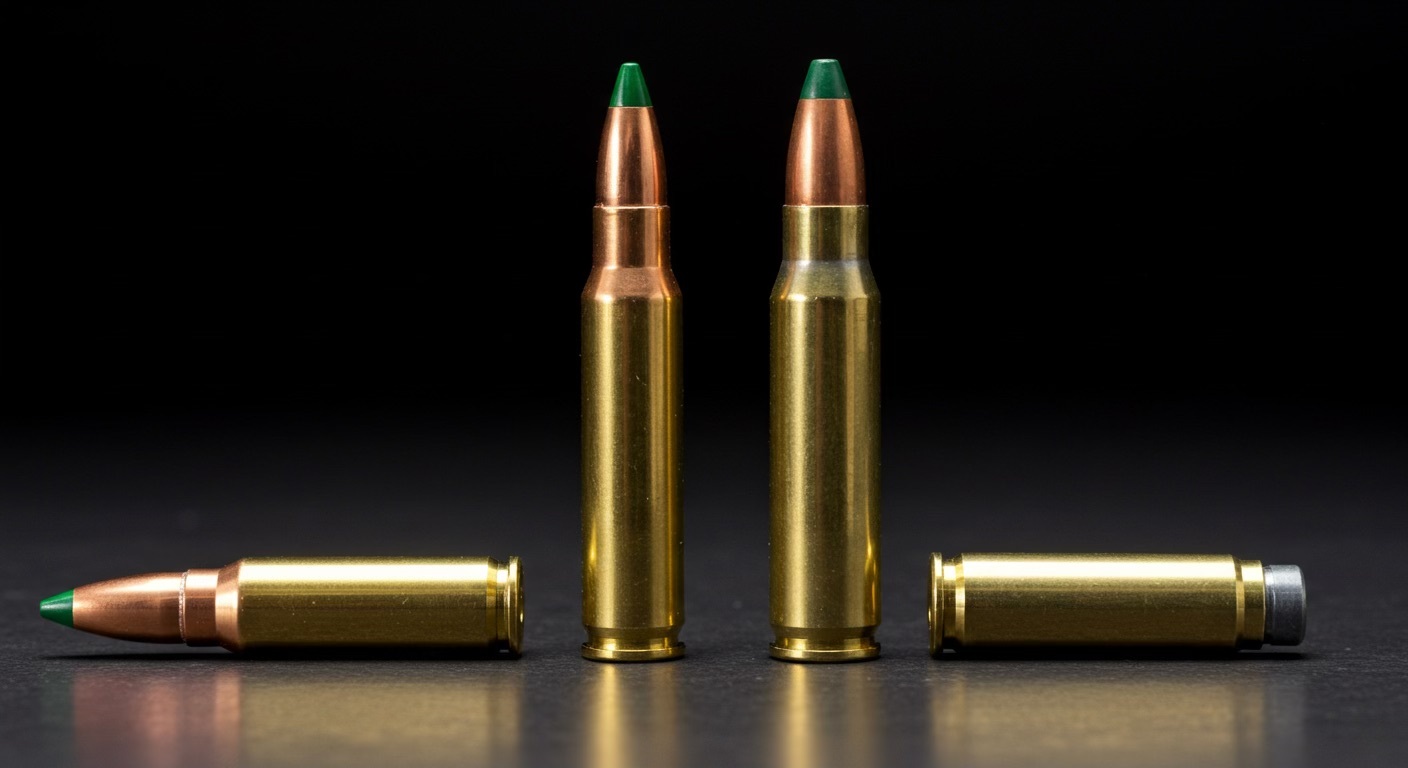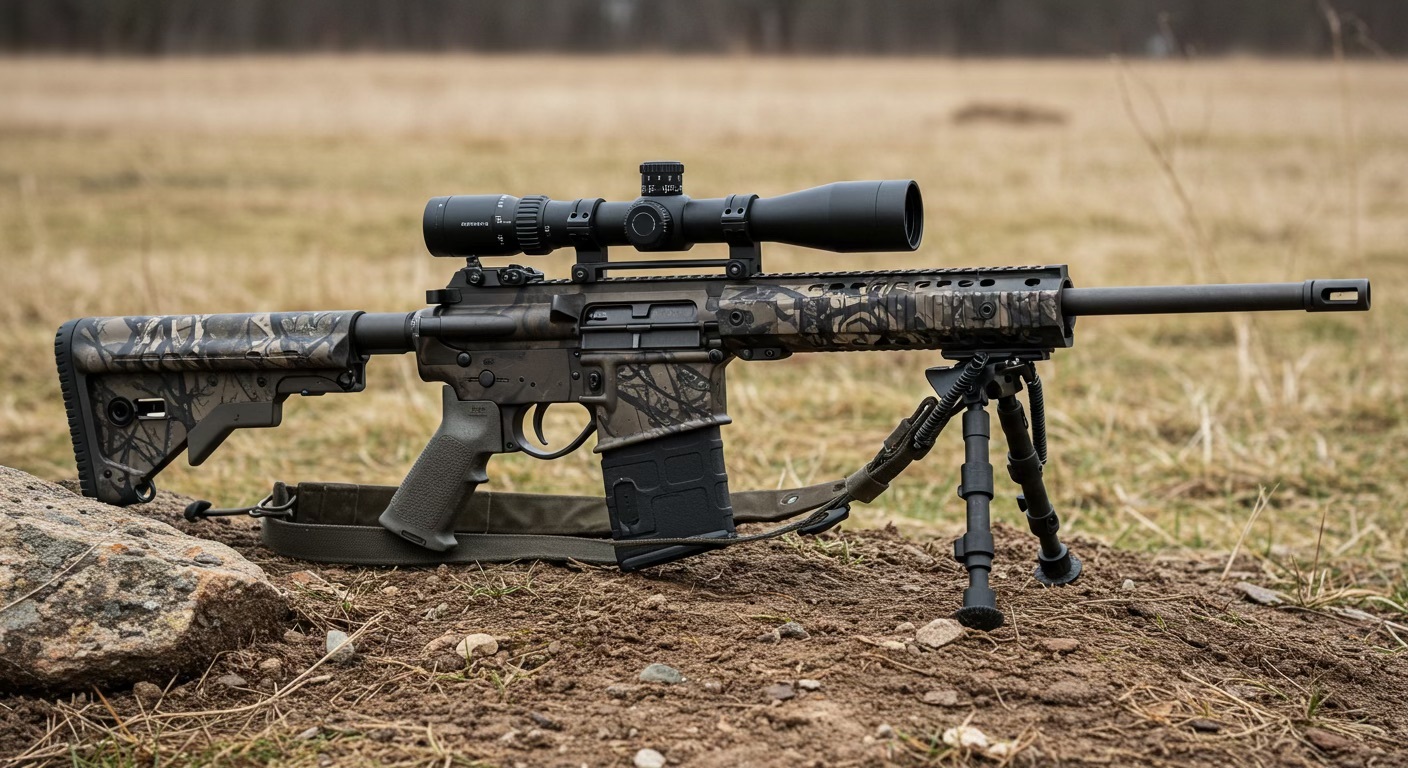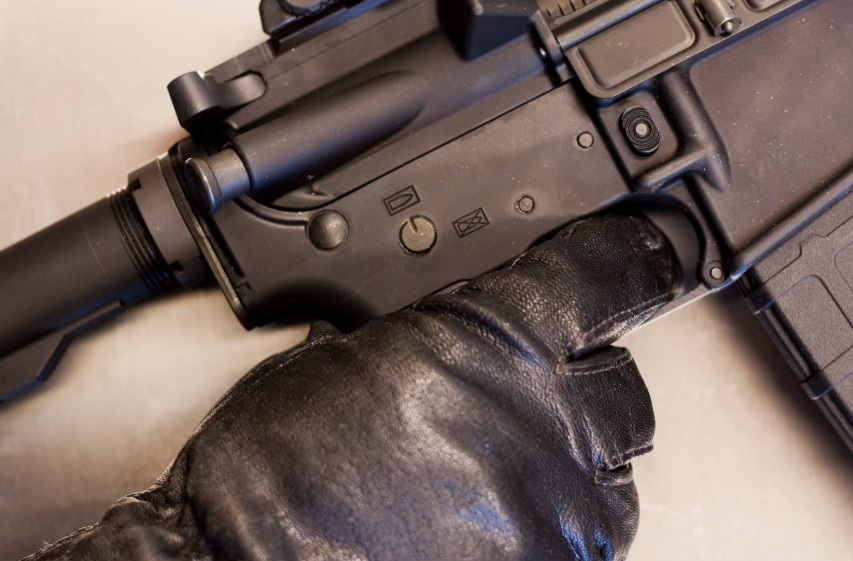When it comes to selecting the right cartridge for your rifle, the debate between 6mm ARC and .243 Winchester has become increasingly relevant for precision shooters and hunters alike.
Both cartridges offer impressive ballistic performance, but understanding their key differences is crucial for making an informed decision that matches your specific needs. The 6mm ARC (Advanced Rifle Cartridge) has gained significant traction since its introduction in 2020, while the .243 Winchester has maintained its reputation as a versatile option since 1955.
This comprehensive comparison will break down everything from ballistic performance and effective range to recoil management and platform compatibility, helping you determine which cartridge truly deserves a place in your arsenal.
Whether you're building a new AR-platform rifle or selecting ammunition for your bolt action, the team at AR15 Parts has you covered with the insights and components you need to make the right choice.
How Design Origins Shape the Strengths of 6mm ARC and .243 Winchester
The 6mm ARC and .243 Winchester emerged from distinctly different eras and design philosophies, which heavily influence their performance characteristics today. The .243 Winchester, introduced by Winchester in 1955, was developed as a versatile cartridge for both varmint hunting and medium-sized game.
It was essentially a necked-down .308 Winchester case designed to accommodate 6mm (.243 inch) bullets. This design choice created a cartridge with relatively high velocity, flat trajectory, and moderate recoil that quickly became popular among hunters and recreational shooters. In contrast, the 6mm ARC is a much more recent development, introduced by Hornady in 2020 specifically for the AR-15 platform.
It was designed in collaboration with the Department of Defense to create a cartridge that would extend the effective range of standard AR-15 rifles while maintaining manageable recoil and compatibility with standard AR-15 magazines and bolt faces with minimal modifications. The 6mm ARC is based on the 6.5 Grendel case, which provides an efficient powder capacity for the 6mm bullet diameter.
While the .243 Winchester was conceived during an era when bolt-action rifles dominated the hunting scene, the 6mm ARC represents modern ballistic engineering focused on enhancing the capabilities of today's most popular semi-automatic platform. These different development contexts heavily influence the cartridges' optimal use cases and performance characteristics in the field.
Side-by-Side Ballistic Breakdown: Speed, Energy, and Wind Drift
When comparing the ballistic performance of the 6mm ARC and .243 Winchester, several key metrics deserve attention. The .243 Winchester typically pushes 90-100 grain bullets at velocities between 2,960-3,100 fps from a 24-inch barrel. Heavier bullets in the 105-107 grain range maintain respectable velocities around 2,750-2,850 fps.
This combination of moderate bullet weight and high velocity creates an impressively flat trajectory, with most loads maintaining supersonic flight beyond 1,000 yards. The 6mm ARC, running in a typical 18" to 20" AR-15 barrel, propels 105-108 grain bullets at approximately 2,750-2,800 fps.
While this velocity is slightly lower than what the .243 Winchester achieves with lighter bullets, the 6mm ARC typically utilizes bullets with higher ballistic coefficients, which helps maintain velocity and energy at extended ranges. AR15 Parts offers excellent options like the 18" 6MM ARC Barrel - Ballistic Adv - SPR that maximize the cartridge's ballistic potential.
Looking at energy figures, the .243 Winchester delivers approximately 1,950-2,000 ft-lbs at the muzzle with 100-grain loads, while the 6mm ARC typically generates around 1,700-1,800 ft-lbs with 108-grain bullets. This energy difference narrows significantly at distances beyond 300 yards due to the superior aerodynamics of the heavier bullets commonly used in 6mm ARC loads.
For wind drift, a critical factor in long-range shooting, the 6mm ARC typically shows an advantage with its heavier, high-BC bullets. At 500 yards in a 10 mph crosswind, a 108-grain 6mm ARC load might drift approximately 13-14 inches, while a 100-grain .243 Winchester load would experience about 16-17 inches of drift.
Which Cartridge Delivers the Best Accuracy at Practical Hunting and Target Distances?
Both cartridges offer impressive effective ranges, but their optimal distance brackets differ slightly based on intended use.
The .243 Winchester has proven itself effective for deer-sized game out to approximately 300-350 yards in hunting scenarios. For target shooting, it remains competitive out to 1,000 yards, though it begins to lose some of its advantage at extreme distances as the bullets drop below supersonic speed.
The 6mm ARC, with its focus on ballistic efficiency rather than raw velocity, maintains excellent accuracy potential at extended ranges. It comfortably handles precision shooting tasks at 600-800 yards and remains capable at 1,000 yards with proper loads. For hunting, it's effectively lethal on medium-sized game to about 300 yards, similar to the .243 Winchester despite its lower initial velocity.
A key advantage of the 6mm ARC in terms of accuracy potential is its compatibility with shorter, stiffer barrels that tend to promote consistent harmonics. The 18" 6MM ARC Complete Upper - Satern Medium SS exemplifies this balance between ballistic performance and practical handling, offering excellent accuracy without excessive barrel length.
When comparing group sizes, much depends on the specific firearm, ammunition quality, and shooter skill. However, both cartridges are capable of sub-MOA accuracy with quality components. The 6mm ARC tends to show particularly impressive consistency across different barrel lengths, maintaining tight groups even in shorter 16-18" barrels, whereas the .243 Winchester typically performs best with barrels 22" and longer.
Recoil and Handling: Which Round Feels Better Behind the Trigger?

Recoil management plays a crucial role in shooting performance, particularly for extended sessions or when rapid follow-up shots are necessary. The felt recoil of the .243 Winchester in a typical 7.5-pound bolt-action rifle generates approximately 10-12 ft-lbs of recoil energy.
This places it on the milder end of the spectrum for centerfire rifles, making it accessible for shooters of various experience levels and physical builds. This moderate recoil is one reason why the .243 Winchester has long been recommended as an excellent option for younger or smaller-statured hunters.
The 6mm ARC generates even less felt recoil, typically in the range of 7-9 ft-lbs in a standard AR-15 platform weighing around 7-8 pounds. This reduced recoil is partly due to the semi-automatic action absorbing some of the energy and partly because of the cartridge's more moderate pressure and velocity compared to the .243 Winchester.
From a shooter experience perspective, the reduced recoil of the 6mm ARC translates to several practical advantages:
- Faster target reacquisition for follow-up shots
- Reduced fatigue during extended shooting sessions
- Less tendency to develop flinch or anticipation during trigger press
- Better ability to spot bullet impacts without losing sight picture
For competitive shooters or those engaged in scenarios requiring rapid, accurate follow-up shots, these advantages can make a significant difference in overall performance.
Which Cartridge Wins for Build Versatility and Platform Options?
The platform compatibility of these two cartridges represents perhaps their most significant difference, with major implications for practical use.
The .243 Winchester was designed for traditional bolt-action rifles and continues to be chambered primarily in these platforms. Virtually every major rifle manufacturer offers multiple models in .243 Winchester, from budget-friendly options to premium precision rifles. The cartridge's rimmed case and overall length make it ill-suited for most semi-automatic actions, particularly the AR-15 platform.
The 6mm ARC, by contrast, was explicitly designed for the AR-15 platform, offering a significant ballistic upgrade over the standard 5.56mm NATO without requiring a move to larger AR-10 type rifles. It achieves this through an efficient case design that fits the AR-15 magazine well while providing enough powder capacity to drive 6mm bullets at respectable velocities.
Key platform considerations include:
- Magazine Capacity: Standard AR-15 magazines can typically hold 24-25 rounds of 6mm ARC, offering significantly greater capacity than most bolt-action .243 Winchester rifles.
- Parts Compatibility: The 6mm ARC requires only a barrel change, an appropriate bolt, and magazines on an AR-15 platform, making conversion relatively straightforward.
- Weight Considerations: Typical AR-15s in 6mm ARC weigh 7-8 pounds, comparable to many .243 Winchester bolt guns but with semi-automatic capability.
- Aftermarket Support: While the .243 Winchester enjoys broader ammunition availability, the 6mm ARC has rapidly developing aftermarket support for components and complete uppers from manufacturers like those available at AR15 Parts.
This platform's flexibility makes the 6mm ARC particularly appealing to shooters who prefer the ergonomics, modularity, and rapid-fire capability of the AR platform but desire ballistic performance beyond what traditional AR cartridges like 5.56mm NATO can deliver.
Which Round Saves You More? Ammo Availability and Cost Considerations
Ammunition availability and cost represent important practical considerations for any shooter considering these cartridges.
The .243 Winchester enjoys widespread commercial availability, with ammunition options from virtually every major manufacturer. Factory loads typically range from $1.25 to $3.00 per round, depending on quality and bullet construction. Common bullet weights include 55-65 grain varmint loads, 80-100 grain all-purpose loads, and specialized 105-107 grain match loads for precision shooting. This broad selection makes the .243 Winchester highly versatile across different applications.
The 6mm ARC, being much newer, has more limited commercial ammunition options, though this is rapidly expanding. Current factory offerings primarily focus on 103-108 grain loads optimized for longer ranges, with prices ranging from $1.75 to $3.50 per round. Major manufacturers like Hornady, Federal, and Nosler have brought 6mm ARC ammunition to market, but the selection remains narrower than what's available for the .243 Winchester.
For reloaders, both cartridges offer advantages:
- Component Availability: 6mm/.243 bullets are widely available in dozens of styles and weights
- Brass Considerations: .243 Winchester brass is plentiful and affordable, while 6mm ARC brass is becoming more common but remains somewhat more expensive
- Powder Efficiency: The 6mm ARC uses approximately 25-30% less powder per load compared to the .243 Winchester, resulting in lower per-round reloading costs
- Die Availability: Reloading dies for both cartridges are readily available from major manufacturers
When factoring in barrel life, the .243 Winchester's higher operating pressures and velocities typically result in a barrel life of 2,000-3,000 rounds before accuracy degradation becomes noticeable. The 6mm ARC, with its more moderate pressure and velocity, often extends barrel life to 3,000-4,000 rounds or more, representing an additional long-term cost advantage.
Which Cartridge Performs Better in Real-World Hunting Scenarios?

Both the 6mm ARC and .243 Winchester have established roles in hunting scenarios, though with some notable differences in optimal applications.
The .243 Winchester has long been acclaimed as a dual-purpose cartridge, capable of handling both varmints and medium-sized game. With lighter 55-70 grain bullets, it's devastating on coyotes, woodchucks, and similar-sized varmints out to impressive distances, often beyond 300 yards.
When loaded with 90-100 grain bullets, it provides clean, ethical kills on deer, antelope, and similar-sized game within reasonable hunting distances. Key hunting characteristics of the .243 Winchester include:
- Versatility: Effective from prairie dogs to deer with appropriate loads
- Terminal Performance: Excellent expansion and tissue damage with quality hunting bullets
- Flat Trajectory: Minimal holdover required out to 300 yards, simplifying field shooting
- Moderate Recoil: Comfortable for extended hunting sessions and younger or smaller hunters
The 6mm ARC offers similar versatility but with different optimal applications. Its sweet spot lies in medium-sized game hunting from AR-platform rifles, providing an excellent option for hunters who prefer the ergonomics and quick follow-up shot capability of semi-automatic rifles.
For medium-sized game like deer and antelope, the 6mm ARC performs admirably at typical hunting distances (under 300 yards) with 90-108 grain bullets. The cartridge delivers sufficient energy and penetration for clean, ethical kills, particularly when using modern hunting bullets designed for controlled expansion.
For varmint hunting, the 6mm ARC performs well, though the current limited selection of lighter, rapidly expanding bullets designed specifically for this purpose gives the .243 Winchester a slight edge for dedicated varmint hunting applications.
Frequently Asked Questions
Is 6mm ARC better than .243 Winchester for long-range shooting?
For truly long-range shooting (800+ yards), the 6mm ARC often has a slight advantage due to its compatibility with heavier, high-BC bullets that buck the wind better and maintain supersonic velocity longer. However, within 600 yards, the .243 Winchester's higher velocity with medium-weight bullets provides a flatter trajectory.
The best choice depends on your specific shooting scenarios; if you're shooting primarily from an AR platform at extended ranges, the 6mm ARC may hold the edge, while for mixed-use hunting and target shooting at moderate ranges, the .243 Winchester remains excellent.
What's the effective range for hunting with 6mm ARC compared to .243 Winchester?
Both cartridges are effective for deer-sized game to approximately 300-350 yards in the hands of a skilled hunter using quality ammunition. The .243 Winchester delivers slightly more energy at shorter ranges due to higher velocity, while the 6mm ARC maintains energy better at distance due to superior bullet aerodynamics.
For ethical hunting, shot placement remains far more important than the marginal differences between these cartridges at typical hunting distances.
Which cartridge has better barrel life, 6mm ARC or .243 Winchester?
The 6mm ARC typically provides better barrel life, averaging 3,000-4,000 rounds before significant accuracy degradation, while the .243 Winchester generally delivers 2,000-3,000 rounds of accurate barrel life.
This difference stems from the .243's higher pressures, velocities, and larger powder charge, which increase throat erosion. For high-volume shooters, this represents a meaningful advantage for the 6mm ARC.
Can I convert my AR-15 to 6mm ARC easily, and what parts do I need?
Converting an AR-15 to 6mm ARC is relatively straightforward, requiring a new barrel, bolt, and magazines. The 6mm ARC uses the same bolt face as 6.5 Grendel/7.62×39, so compatible bolts are readily available.
Standard AR-15 lower receivers, upper receivers, buffer systems, and fire control groups remain unchanged. Complete upper receivers like those available from AR15 Parts offer the simplest conversion path, allowing you to simply attach the new upper to your existing lower receiver.
How does ammunition cost compare between 6mm ARC and .243 Winchester?
Factory .243 Winchester ammunition is typically 10-25% less expensive than comparable 6mm ARC ammunition due to higher production volumes and market maturity. However, for reloaders, the 6mm ARC uses approximately 25-30% less powder per round, partially offsetting component costs.
As production volumes increase for 6mm ARC, the price gap for factory ammunition is likely to narrow, but currently, the .243 Winchester maintains a cost advantage for shooters who don't reload.
Final Verdict: Which Cartridge Deserves a Spot in Your Rifle Setup?

When deciding between the 6mm ARC and .243 Winchester, your choice ultimately comes down to platform preference and intended use. The 6mm ARC excels in the AR-15 platform, offering impressive long-range performance, reduced recoil, and excellent efficiency in a package that maintains the handling characteristics shooters love about the AR-15.
The .243 Winchester continues to shine in traditional bolt-action rifles with its versatility, commercial ammunition availability, and proven track record spanning decades of field use. For those seeking to enhance their AR-15's capabilities beyond what traditional cartridges offer, the 6mm ARC represents an exciting and practical option available through quality components from retailers.
Build Smarter with AR15 Parts for Better Shooting Confidence
At AR15 Parts, we help shooters build high-performance rifles that match their exact needs, whether for hunting, long-range target shooting, or everyday range use. Our team provides precision components, expert insight, and reliable service so you can feel confident every time you pull the trigger.
Have questions about converting your rifle or selecting the right barrel for 6mm ARC? Contact AR15 Parts, and we’ll help you make the best decision for your build and budget.

